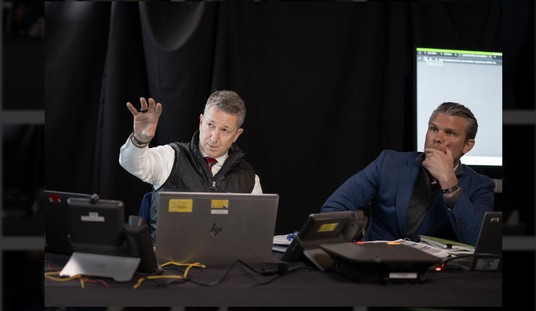Early Tuesday morning, the Bulletin of the Atomic Scientists — a nonprofit media organization — announced just how close it considers the world to be to “Doomsday” from man-made catastrophes such as nuclear war, “climate change,” or a deadly pandemic. For the past 75 years, the Bulletin has used a depiction of an analog clock to indicate how much time remains until midnight — the theoretical Doomsday.
According to its website, the Bulletin “equips the public, policymakers, and scientists with the information needed to reduce man-made threats to our existence,” but the Doomsday Clock itself has become so much more than just a clock.
The Doomsday Clock is many things all at once: It’s a metaphor, it’s a logo, it’s a brand, and it’s one of the most recognizable symbols in the past 100 years. It has permeated not only the media landscape but also culture itself. The Doomsday Clock appears in novels by Stephen King and Piers Anthony, songs by The Who and the Clash, and comics like Watchmen and Stormwatch.
Since 2020, the Doomsday Clock has been set at 100 seconds before midnight — the closest to midnight it had ever been since 1947. Tuesday’s announcement changed that record.
It is now 90 seconds before midnight — the closest the world has ever been to disaster, according to the Bulletin scientists. Each year the Bulletin asks two questions: is humanity safer than last year? And is humanity safer than when we first set the clock? The answer this year is no, due in no small part to Russia’s ongoing invasion of Ukraine with its nuclear threats, but also to “climate crisis” threats, disinformation and disruptive technological threats, and bio-threats. Certainly, the world has entered a dangerous time not seen since the Cold War. The Bulletin called for “vigilance and cooperation” between countries worldwide in order to avoid disaster.
READ the Bulletin’s press release here.
WATCH the complete virtual news conference of the 2023 Doomsday Clock Announcement here.
“Every year, the Bulletin’s Science and Security Board looks at the world’s vulnerability to catastrophe from manmade threats,” Rachel Bronson, president and CEO of the Bulletin of the Atomic Scientists, told ABC News in a statement. “This year, the war in Ukraine and the ripple effects it has caused around the world and on many issues is a major factor in that consideration.
After Russia invaded Ukraine, the Bulletin decided to keep the clock at 100 seconds to midnight, saying that “Russian President Vladimir Putin’s threats to use nuclear weapons if NATO stepped in to help Ukraine ‘is what 100 seconds to midnight looks like.'”
Recommended: Not Paying ‘Her Fair Share’: Embattled Rep. Katie Porter Now Facing FEC Complaint
Last September, after some losses, Putin issued a thinly veiled threat that Russia would consider using nuclear weapons against Ukraine. Meanwhile, the Russian-controlled Zaporizhzhia nuclear plant in Ukraine has been heavily targeted, increasing the risk of nuclear disaster. In response, Rafael Grossi, the director general of the U.N.’s International Atomic Energy Agency, told ABC News last week that he’s “worried that the world has become complacent about the potential risks to the plant.”
Historically, the furthest away from midnight the Doomsday Clock has ever been was in 1991 when it was set at 17 minutes before the hour. That time thirty-two years ago was when President George H. W. Bush and Mikhail Gorbachev, the former Soviet leader, announced nuclear arsenal reductions for each of their countries. Yes, that’s right: a Republican was in the White House and the world was safer. Coincidence? I think not; lots of things were better and safer thirty-two years ago. 2024 can’t come soon enough.










Join the conversation as a VIP Member